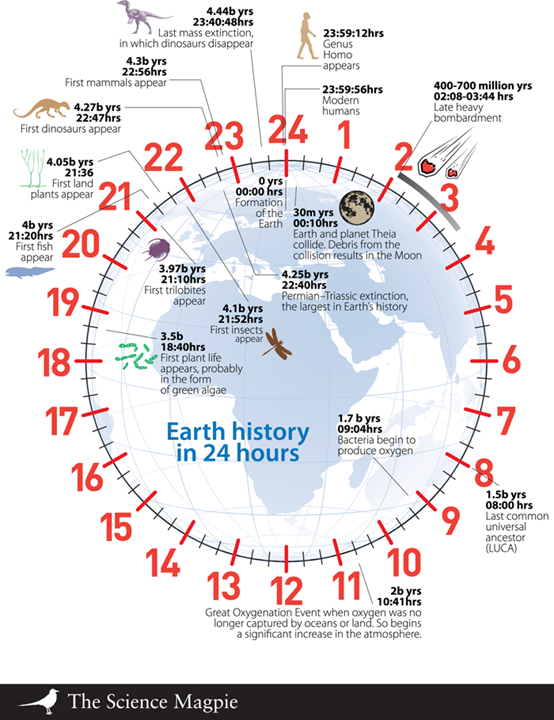
Geologic Time
So, how old IS the Earth?
Radiometric Dating of Earth Rocks
Cratons are the oldest portions of crust.

Image showing the distribution of Pha- nerozoic, Proterozoic Shields and Archean cratons. From: Precambrian Greenstone Belts Host Different Ophiolite Types, Yildirim Dilek, in Evolution of Archean Crust and Early LifeChapter: Chapter 1, Publisher: Springer ScienceEditors: Yildirim Dilek and Harald Furnes
The oldest rocks (to date) are in the Cratons Jack Hills, Australia 2014: Zircon dated to 4.375 b.y.o., +/- 6 m.y. The map below shows the approximate location of Jack Hills, Australia, in addition to a photo of the location.

Image of the Jack Hills from: https://www.livescience.com/43584-earth-oldest-rock-jack-hills-zircon.html
Radiometric Dating of Moon Rocks
Despite rumors to the contrary, we have been to the moon, and have brought back moon rocks to analyze. Average age of the rocks is 4.49 billion years old)

Radiometric Dating of Meteorites
Occasionally, a meterorite will crash land on Earth. We can date those rocks, too. Many meteorites date from the formation of our solar system so they should yeild ages similar to that of the Earth. Scientists have radiometrically dated many of these meterorites, a few of which are listed in the image below. The average age is 4.50 billion years.

Image from: https://ncse.com/library-resource/radiometric-dating-does-work
Radiometric Dating Totals
Rock |
Average or Maximum Age |
Earth Rocks |
4.375 Million Years Old |
Moon Rocks |
~4.49 Million Years Old |
Meteorites |
~4.50 Million Years Old |
